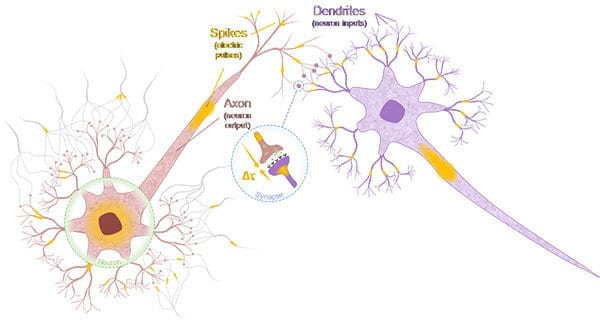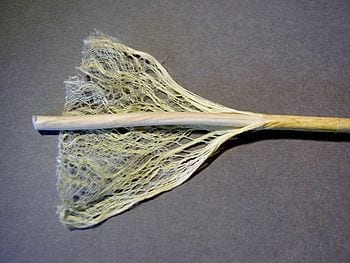
We borrowed 50 year old semiconductor phenomena for our modern spintronic research. Our results are the start of the story but are a proof of principle with a promising future for spins.
Dr Hidekazu Kurebayashi
UCL scientists have discovered a new method to efficiently generate and control currents based on the magnetic nature of electrons in semi-conducting materials, offering a radical way to develop a new generation of electronic devices.
One promising approach to developing new technologies is to exploit the electron’s tiny magnetic moment, or ‘spin’. Electrons have two properties – charge and spin – and although current technologies use charge, it is thought that spin-based technologies have the potential to outperform the ‘charge’-based technology of semiconductors for the storage and process of information.
In order to utilise electron spins for electronics, or ‘spintronics’, the method of electrically generating and detecting spins needs to be efficient so the devices can process the spin information with low-power consumption. One way to achieve this is by the spin-Hall effect, which is being researched by scientists who are keen to understand the mechanisms of the effect, but also which materials optimise its efficiency. If research into this effect is successful, it will open the door to new technologies.
The spin-Hall effect helps generate ‘spin currents’ which enable spin information transfer without the flow of electric charge currents. Unlike other concepts that harness electrons, spin current can transfer information without causing heat from the electric charge, which is a serious problem for current semiconductor devices. Effective use of spins generated by the spin-Hall effect can also revolutionise spin-based memory applications.
The study published in Nature Materials shows how applying an electric field in a common semiconductor material can dramatically increase the efficiency of the spin-Hall effect which is key for generating and detecting spin from an electrical input.
The scientists reported a 40-times-larger effect than previously achieved in semiconductor materials, with the largest value measured comparable to a record high value of the spin-Hall effect observed in heavy metals such as Platinum. This demonstrates that future spintronics might not need to rely on expensive, rare, heavy metals for efficiency, but relatively cheap materials can be used to process spin information with low-power consumption.
The Latest on: Spintronics
[google_news title=”” keyword=”Spintronics” num_posts=”10″ blurb_length=”0″ show_thumb=”left”]
via Google News
The Latest on: Spintronics
- Revolutionizing Technology: Spintronics Market Surges, Expected to Reach US$ 1.4 Billion by 2033on April 29, 2024 at 5:18 am
Spintronics Market is set to cross worth of US$ 1,394.2 Million at 7.3% CAGR during forecast period 2023 to 2033 | Data analysis by Future Market Insights, Inc.
- Cracking the Code on Spin Currents: A Novel Development in Spintronicson April 24, 2024 at 12:36 pm
In a research published in the journal Applied Physics Letters, Yusuke Nambu and his colleagues from Tohoku University’s Institute for Materials Research revealed that the spin current signal changes ...
- Here’s Everything You Need To Know About Spintronicson April 23, 2024 at 5:00 pm
Spintronics, also known as spin electronics, is a rapidly developing field that explores the potential of utilising the spin of electrons in solid-state devices. Spin is one of the three ...
- Unlocking spin current secrets: A new milestone in spintronicson April 23, 2024 at 2:55 pm
Using neutron scattering and voltage measurements, a group of researchers have discovered that a material's magnetic properties can predict spin current changes with temperature. The finding is a ...
- Spintronics research shows material's magnetic properties can predict how a spin current changes with temperatureon April 23, 2024 at 10:11 am
Spintronics is a field garnering immense attention for its range of potential advantages for conventional electronics. These include reducing power consumption, high-speed operation, non-volatility, ...
- Spintronics: A new path to room temperature swirling spin textureson April 17, 2024 at 10:22 am
Examples of such structures are magnetic bubbles, skyrmions, and magnetic vortices. Spintronics aims to make use of such tiny magnetic structures to store data or perform logic operations with very ...
- Spintronics: A new path to room temperature swirling spin textureson April 16, 2024 at 5:01 pm
Examples of such structures are magnetic bubbles, skyrmions, and magnetic vortices. Spintronics aims to make use of such tiny magnetic structures to store data or perform logic operations with ...
- Spintronics Using Altermagnets and Antiferromagnetson April 8, 2024 at 5:00 pm
The field of spintronics has, so far, focused on magnetic systems with uncompensated order, i.e. ferromagnets and ferrimagnets. Both these systems can be easily studied using conventional ...
- Transporting spin information at the speed of lighton April 2, 2024 at 4:59 pm
The breakthrough, described in a study published March 27 in Nature, involves the field of spintronics, which aims to manipulate the spin of electrons in order to store and process information. The ...
- Spintronics enters the mainstreamon October 5, 2022 at 6:24 am
Now, electronics is on the verge of a revolution as the semiconductor industry’s big players start picking up the low-power spintronics technology — and just in time, as Tetsuo Endoh ...
via Bing News











